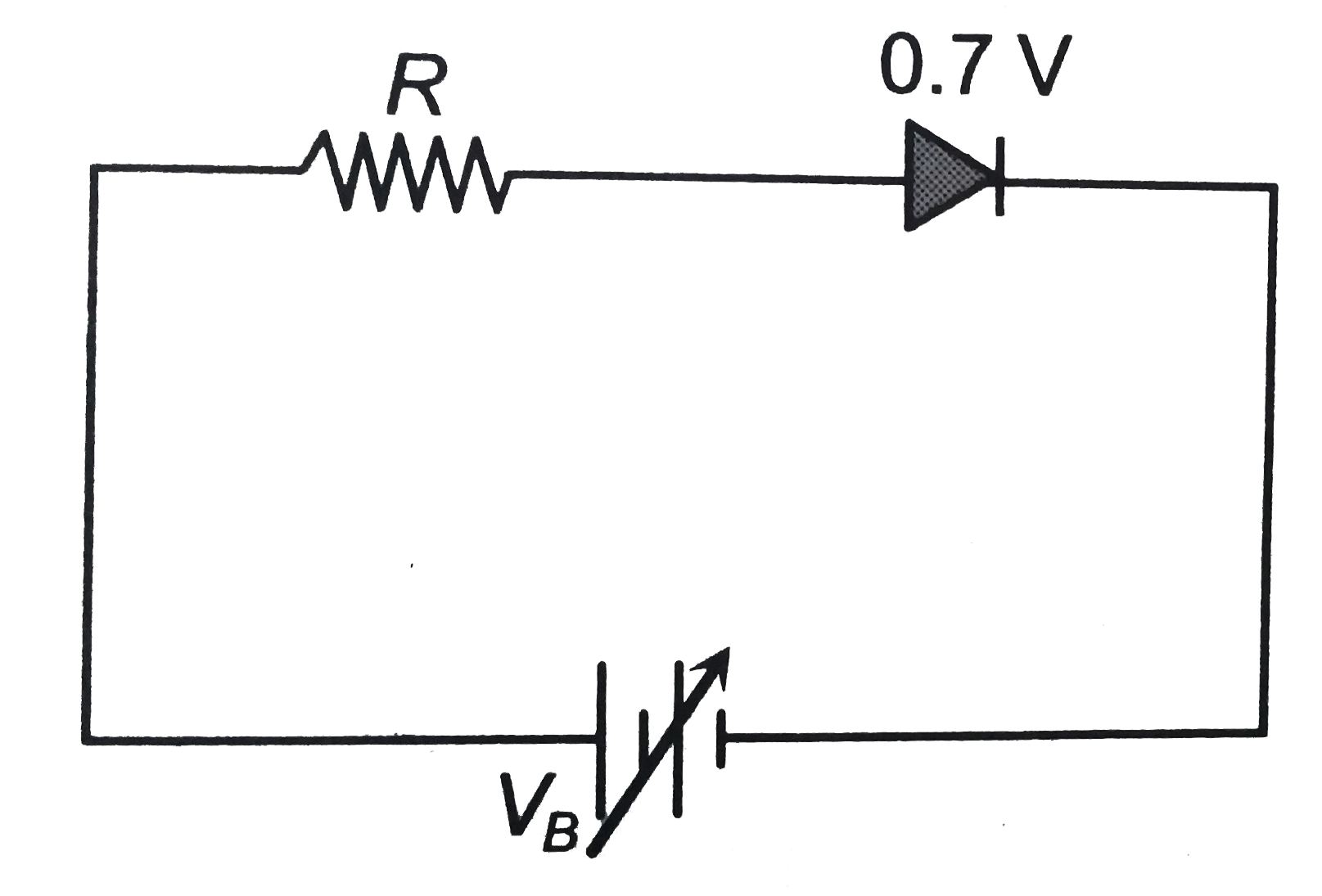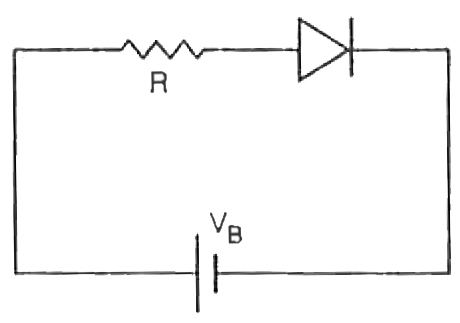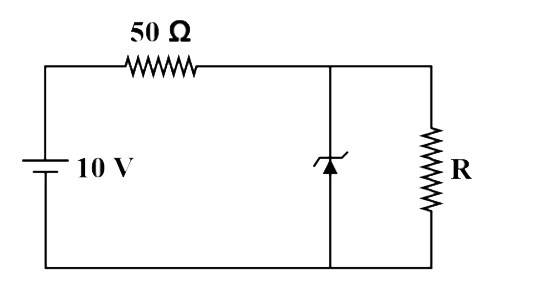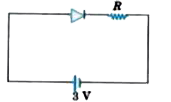The junction diode in the following circuit requires a minimum current 1 mA to be above the knee point (0.7 V)of its I-V characteristic curve. The voltage across the junction diode is independent of current above the knee point, if VB=4V, then the maximum value of R so that the voltage is above knee point will be

3.3kΩ
4.0kΩ
4.7kΩ
6.6kΩ
The correct Answer is:A
As, VB=Vknee+IR or 4=0.7+10−3R ⇒ R=3.3/10−3=3.3×103Ω
Similar Questions
The junction diode in the following circuit requires a minimum current of 1mA to be above the knee point (0.7V) of its I−V characterstic curve. The voltage across the diode is independent of current above the knee point. If VB=5V, then the maximum value of R so that the voltage is above the knee point, will be
 View Solution
View SolutionAssume that the silicon diode in the given circuit requires a minimum current of 1 mA to be above the (knee-point voltage = 0.7 V) of its I−V characteristics. Assuming that the voltage across the diode is independent of current above the knee-point, find the maximum value of R so that the voltage is above the knee-point if VB=5A. Also find the value of R to establish a current of 5 mA in the circuit for the since voltage.
 View Solution
View Solution
Knowledge Check
- Question 1 - Select One
The junction diode in the following circuit requires a minimum current of 1mA to be above the knee point (0.7V) of its I−V characterstic curve. The voltage across the diode is independent of current above the knee point. If VB=5V, then the maximum value of R so that the voltage is above the knee point, will be
 A4.3kΩB860kΩC4.3ΩD860Ω
A4.3kΩB860kΩC4.3ΩD860Ω - Question 2 - Select One
The 6 V Zener diode shown in the figure has negligible resistance and a knee current of 5 mA. The minimum value of R (in Ω) so that the voltage across it does not fall below 6 V is
 A40B60C80D120
A40B60C80D120 - Question 3 - Select One
The 6 V Zener diode shown in the figure has negligible resistance and a knee current of 5 mA. The minimum value of R (in Ω) so that the voltage across it does not fall below 6 V is
 A40B60C72D80
A40B60C72D80
The junction diode in the following circuit requires a minimum current of 1mA to be above the knee point (0.7V) of its I−V characterstic curve. The voltage across the diode is independent of current above the knee point. If VB=5V, then the maximum value of R so that the voltage is above the knee point, will be
 View Solution
View SolutionAssume that the silicon diode in the circui shown in fig. requires a minimum current of 1mA to be above the knee point (0.7V) of its I−V characteristics. Aslo assume that the voltage across the diode is independent of current above the knee point.
(a) If VB=5V, what should be the maximum value of R so that the voltage is above the knee point?
(b) If VB=5V, what should be the value of R to estabilish the current of 5mA in the circuit?
(c) What is the power dissipated in the resistance R and in the diode, when a current of 5mA flows in the circuit at VB=6V?
(d) If R=1kΩ, what is the minimum voltage VB required to keep the diode above the knee point?View SolutionIn the current versus voltage characteristics of a diode minimum current of 1 mA is required for the knee voltage to be is connected in a cirucit the minimum value of R so that the voltage is above knee point is
 View Solution
View SolutionThe 6 V Zener diode shown in the figure has negligible resistance and a knee current of 5 mA. The minimum value of R (in Ω) so that the voltage across it does not fall below 6 V is
 View Solution
View SolutionThe 6 V Zener diode shown in the figure has negligible resistance and a knee current of 5 mA. The minimum value of R (in Ω) so that the voltage across it does not fall below 6 V is
 View Solution
View Solution

